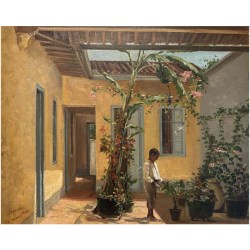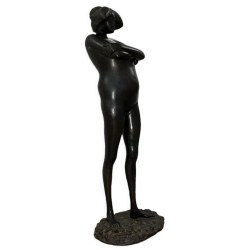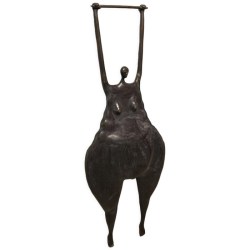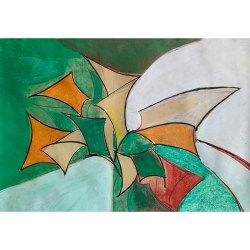Bio
 Cuban painter, born in Sagua la Grande. His father was Chinese, his mother of mixed African, Indian and European origin, and Lam’s career was appropriately cosmopolitan. After studying at the Academy in Havana. 1930-3, he settled in Madrid in 1924. In 1938 he moved to Paris, where he became a friend of *Picasso. He also met *Breton (whose book Fata Morgana he illustrated in 1940) and in 1939 he joined the *Surrealist. In the same year he had his first one-man exhibition, at the Gallery Pierre Loeb. In 1941 he sailed ship as Breton, Masson and many other intellectuals who were fleeing the Germans. He made his way back to Cuba in 1942 and over the next few years his work was influenced both by jungle scenery and by savage local rituals. Following visits to Haiti in 1945 and 1946 he also began incorporating images of Voodoo gods and rituals in his work. From 1947 to 1952 he traveled extensively, spending time in Cuba, New York, and Paris. In 1952 he settled in Paris again, but from 1960 he also spent much of his time in Albino Mare, near Genoa. In the 1970s he began making bronze sculpture.
Cuban painter, born in Sagua la Grande. His father was Chinese, his mother of mixed African, Indian and European origin, and Lam’s career was appropriately cosmopolitan. After studying at the Academy in Havana. 1930-3, he settled in Madrid in 1924. In 1938 he moved to Paris, where he became a friend of *Picasso. He also met *Breton (whose book Fata Morgana he illustrated in 1940) and in 1939 he joined the *Surrealist. In the same year he had his first one-man exhibition, at the Gallery Pierre Loeb. In 1941 he sailed ship as Breton, Masson and many other intellectuals who were fleeing the Germans. He made his way back to Cuba in 1942 and over the next few years his work was influenced both by jungle scenery and by savage local rituals. Following visits to Haiti in 1945 and 1946 he also began incorporating images of Voodoo gods and rituals in his work. From 1947 to 1952 he traveled extensively, spending time in Cuba, New York, and Paris. In 1952 he settled in Paris again, but from 1960 he also spent much of his time in Albino Mare, near Genoa. In the 1970s he began making bronze sculpture.
Lam’s work reconciled the European avant-garde with the artistic traditions of Latin America and the powerful mystique of African and Oceanic art, fusing human, animal, and vegetable elements in menacing semi-abstract images (Rumblings of the Earth, Guggenheim Museum), New York, 1950). He won several prestigious prizes and his work is included in numerous leading collections of modern art, among them the Tate Gallery, London, and the Museum of Modern Art, New York.







